If you find yourself in London and you simply can’t face the noise and swirl of shoppers and traffic then I can recommend a quiet visit to the delightful Garden Museum located south of the river in a church right next door to Lambeth Palace.

The Church of St. Mary-at-Lambeth was made redundant in the early 1970s. Boarded up and ready for demolition it was fortunate that Rosemary and John Nicholson visited the churchyard in search of the tombs of the gardeners and plant collectors father and son John Tradescant . Subsequently the Nicholsons formed the Tradescant Trust which basically saved the church and converted it into the worlds first museum dedicated to Garden History. Glass doors quietly slide open doing away with that hideous clerical creaky door syndrome….

….inside it is spacious and well lit; a fantastic use of a parochial building, modern but without destroying that old ecclesiastical feel.

Delighted that my Art Fund pass ( https://www.artfund.org/national-art-pass) allowed me half price entrance I headed for the small room to the side which holds the present exhibition on the life and career of Humphry Repton (1752 – 1818).
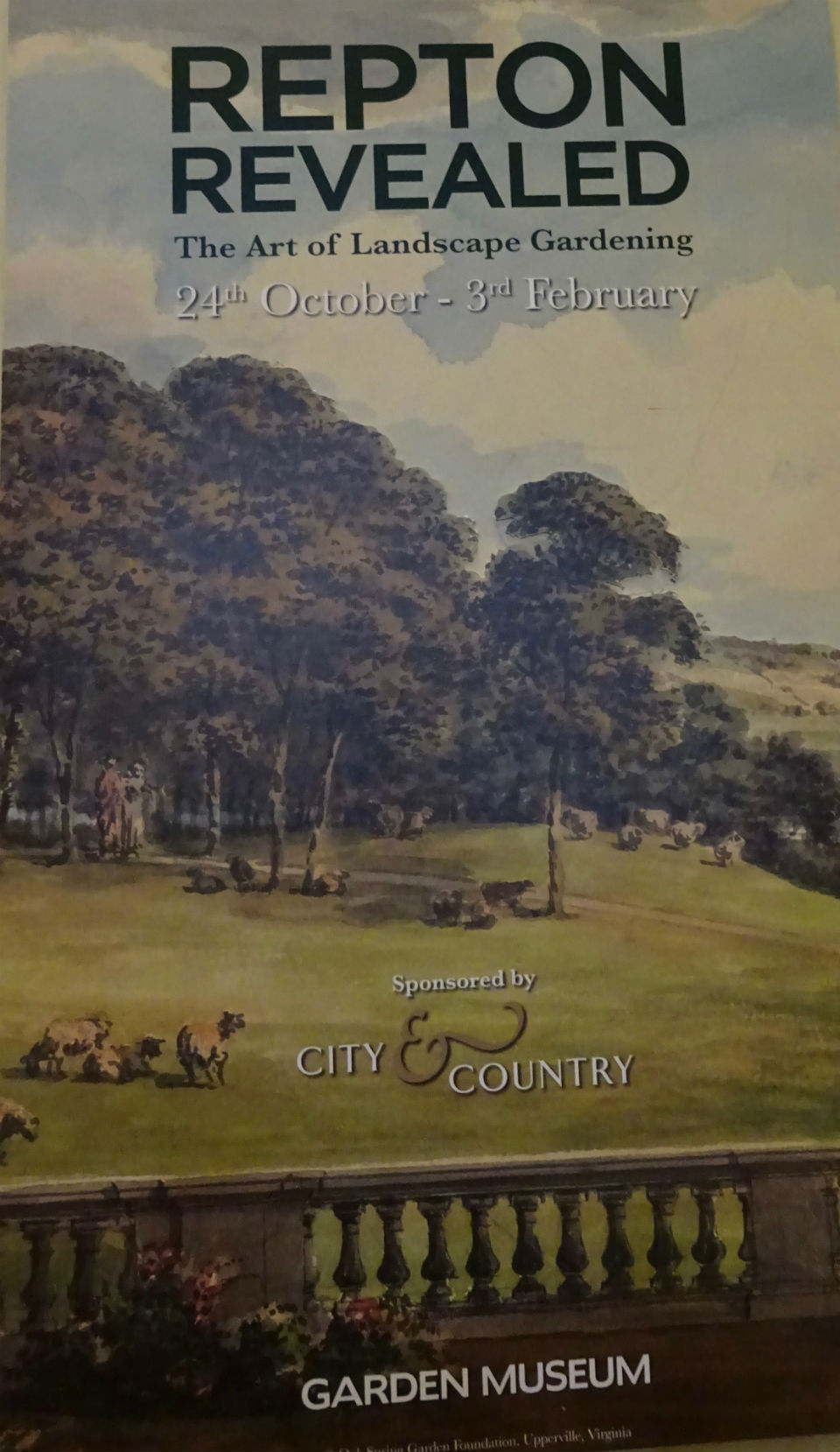
Last year was the bicentenary of Repton’s death and there has been much research undertaken. This exhibition brings together objects, watercolours and some 24 of his Red Books. These leather bound books were his designs, works of art and a clever marketing tool for his commissions from clients up and down the country. One book stands out that is the grand design for Brighton Pavilion, yet it proved to be a commission Repton failed to win possibly due to the fact that he failed to respond quickly enough; you just cannot keep Royalty waiting.
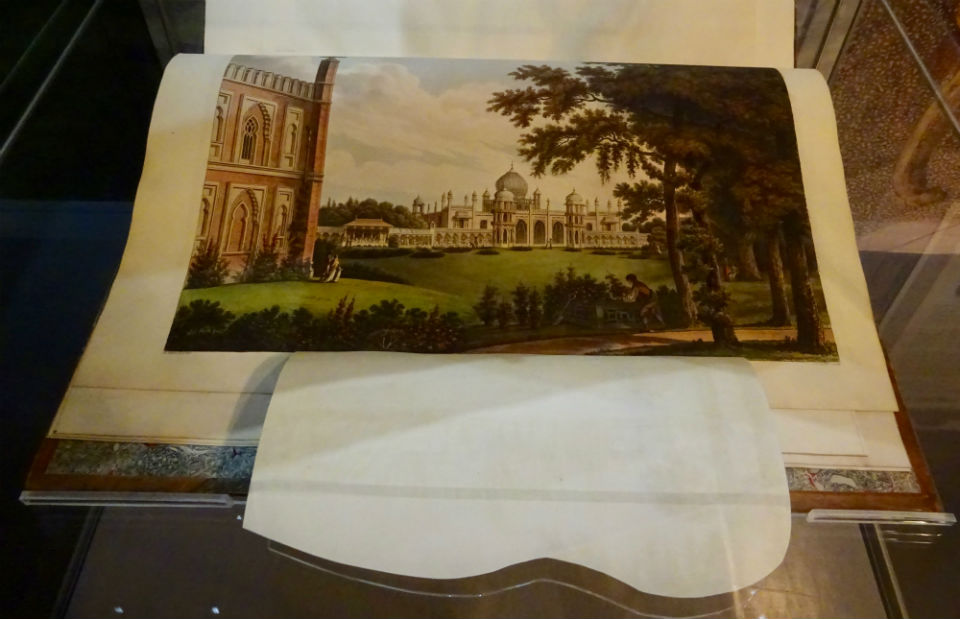
Included in the exhibition is a short film, a clever digital animation bringing the art of Repton alive; the smoke seems to drift away in the far distance and with the soothing narration from Jeremy Irons you feel you are part of that landscape.

What I really enjoyed about this exhibition is how Repton’s legacy lives on. Although after his death he seems to have been rather forgotten in this country, he became a role model for American landscape architects who wanted to combine the design of buildings and landscape with horticulture and the science of transportation. Repton had advised his clients of the importance of ‘The approach’ incorporating it as a feature in the landscape. He was very interested in travel, enjoying roads as ‘a constant moving scene’ and felt they should not be hidden. His ideas influenced the design of the carriage rides in Central Park, New York.
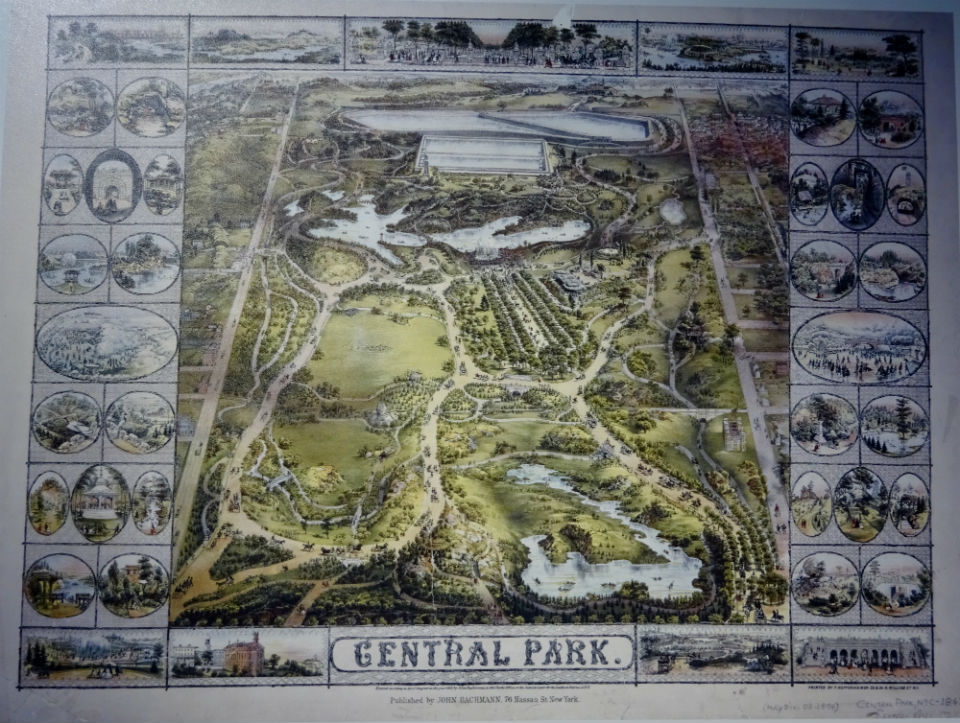
‘Others prefer still-life, I delight in movement’ and Repton realised that we observe landscape at a fast pace (even from a carriage) very often from the curving sightline of a road and this theory of optics was applied to the new roads being developed for Americans to enjoy their scenery such as the Parkway and the Sky Drive.

With his ideas of integrating architecture and landscape, Repton became a major influence on Denis Lasdun, he of University of East Anglia fame.

A small photo shows Lasdun visiting Repton’s grave (which Repton designed himself) made into a Christmas card that I realise was sent from a family I had known in my childhood and suddenly I too felt I had made a tiny connection with the great landscape designer himself.

With much still to see of the museum I hurried on past a group being shown the Walcot room, a small library tucked behind the rood screen,

just glancing up at the little stained glass window above.
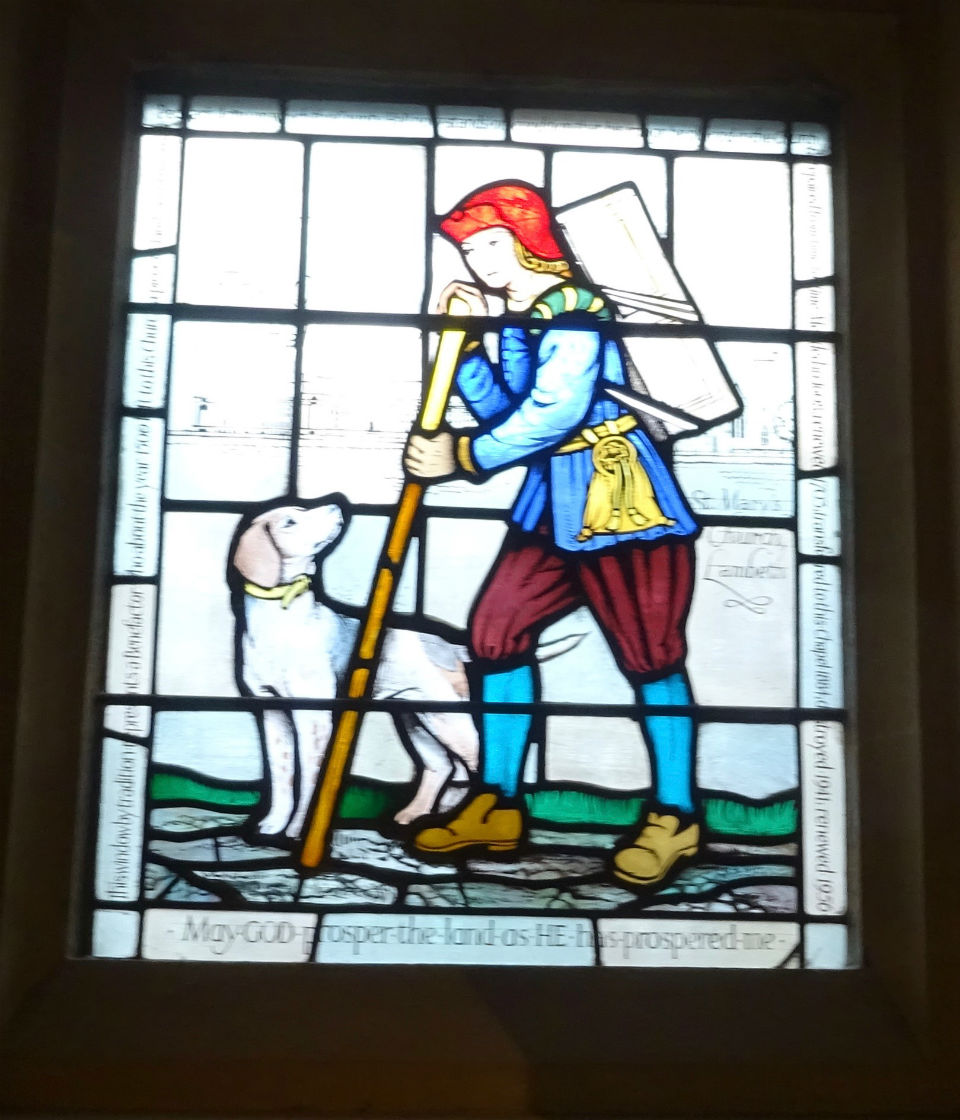
I moved on into a small room that houses a collection of ‘curiosities’. These items were collected by John Tradescant, gardener to Robert Cecil and later to King Charles 1. Tradescant created Britain’s first Museum not far away in Lambeth which became known as The Ark. Lawyer, friend and neighbour Elias Ashmole published a catalogue and when Tradescant junior died the collection was bequeathed to Ashmole and became the foundation of the Ashmolean Museum.

Such items range from the cast of a Dodo head,

the rather quirky Barometz or ‘Vegetable Lamb’ believed to be half-lamb and half-plant from the 18th century,

a glittering collection of shells,

to a Herball by John Gerard dated 1597 in which over 1,000 plants are described.
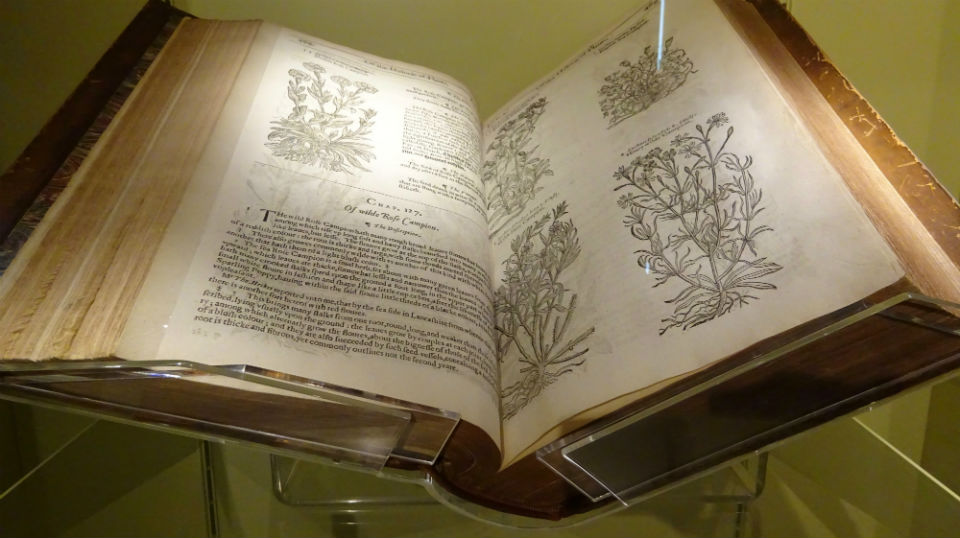
It is a very active museum and I suddenly realise that Elias Ashmole is speaking to me.

Upstairs is a glorious collection celebrating British gardening through the years. Suitable for all ages it is a delightful mix from paintings…

a portrait of a relaxed Prince Charles greets us at the top of the stairs.

Many famous people connected to gardening have contributed archives and objects and it is a wonderful eclectic mix. Amongst the many items in the collection is a gardening hat belonging to garden designer Nancy Lancaster (1897 – 1994),

a Certificate of Good Service in the Women’s Land Army, yes that is all they got after ten years hard work.
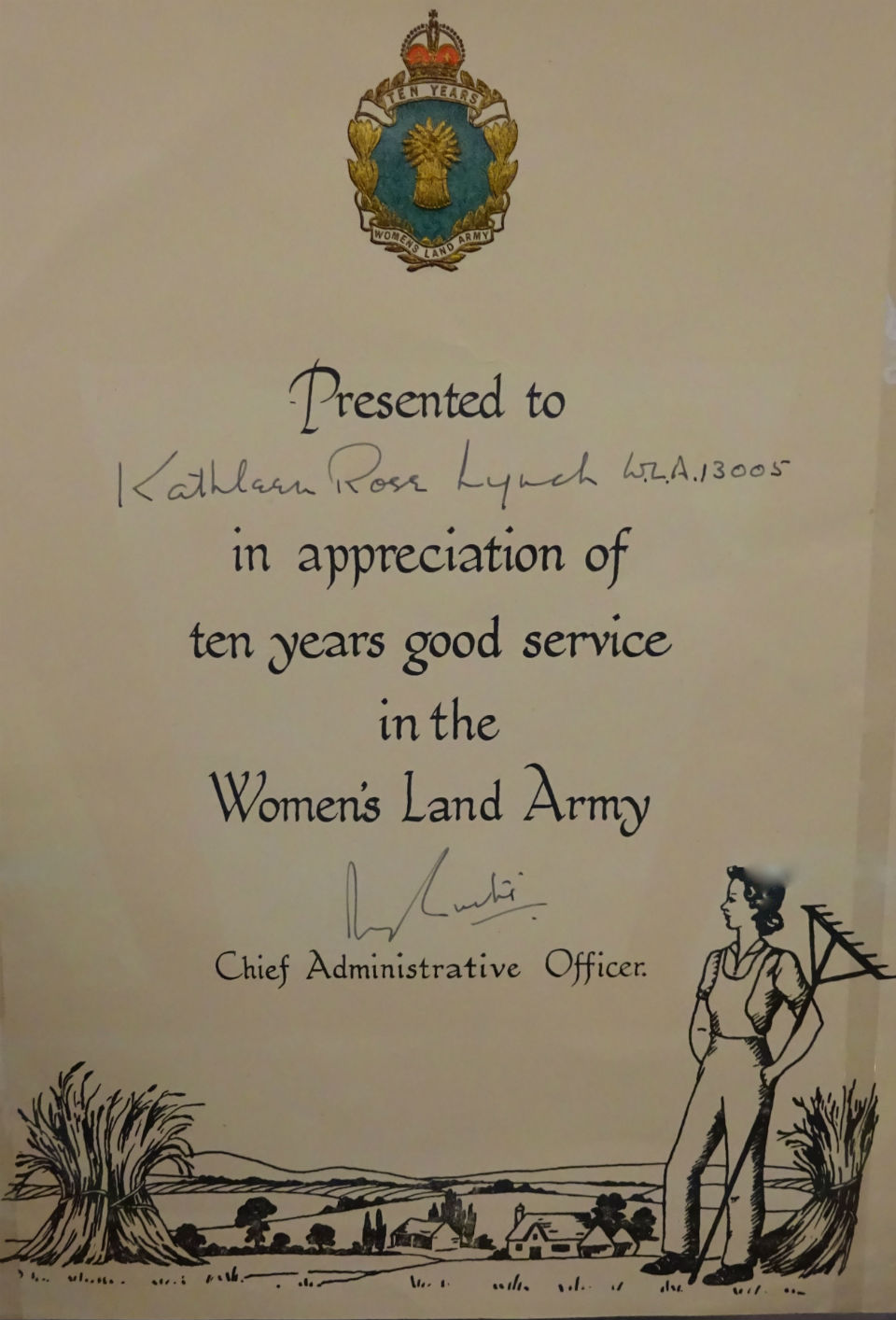
And wouldn’t you have longed to give your wife this glorious lawn mower.

Amongst the displays are interesting information boards on a variety of plants – not too many just enough to realise the serious side of gardening.

and of course there just had to be a jolly old gnome.
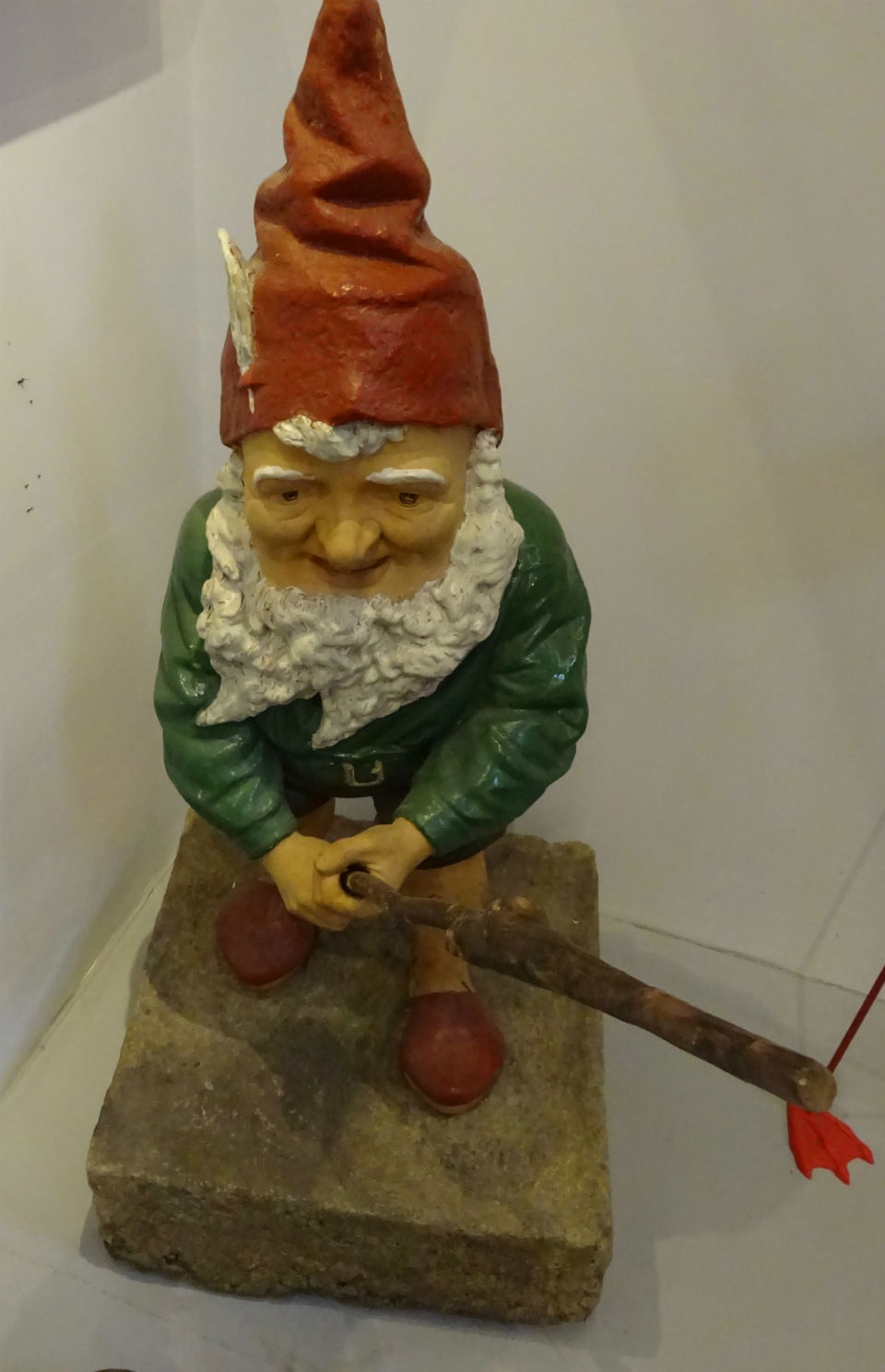
From a small window in the Finnis Scott Gallery where you can become totally absorbed on the works of the Artist gardeners, you can look down and once again remember that you are in a fine building .
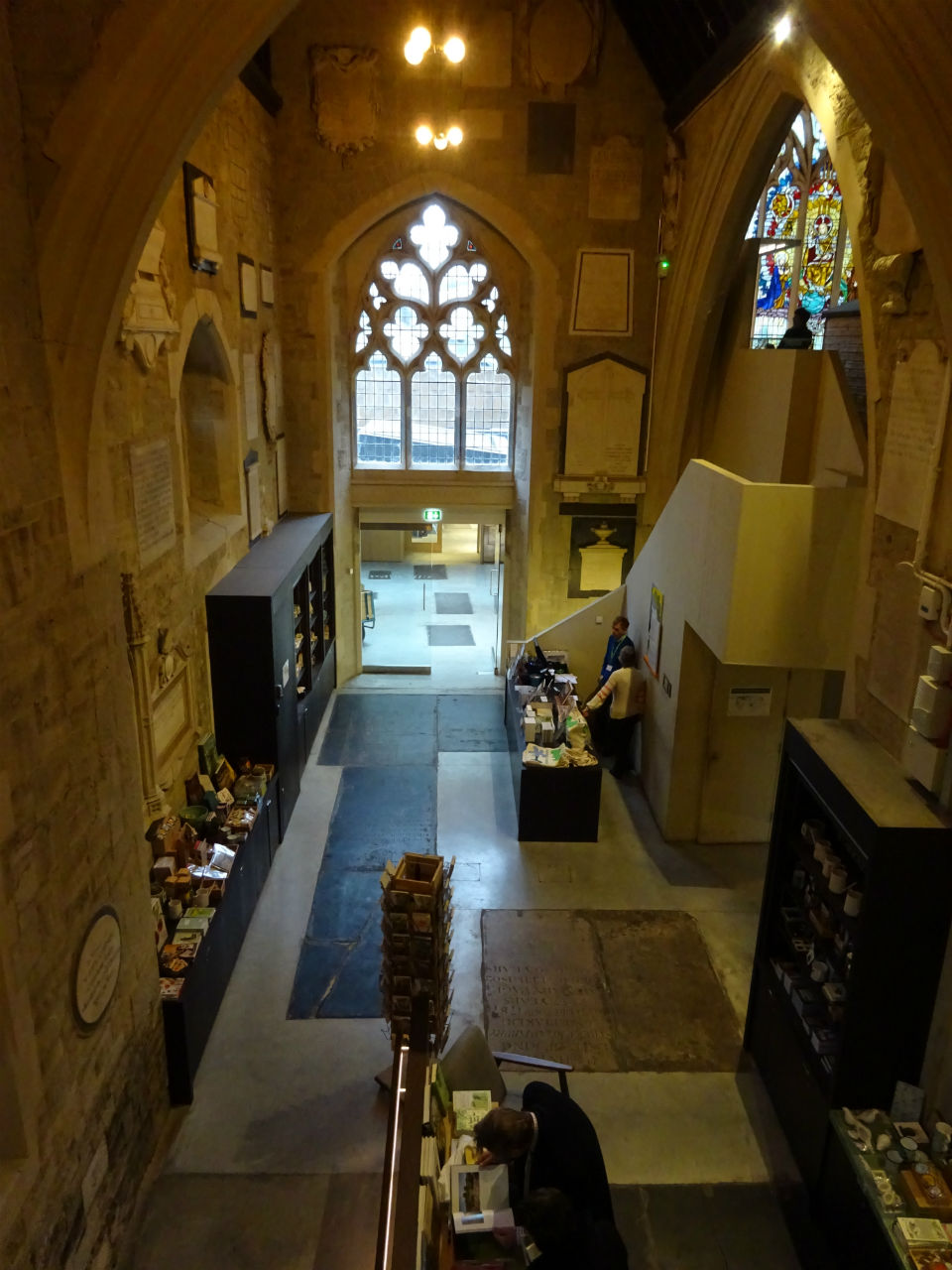
There is a good display of plans executed by various Garden Designers over the years, this masterpiece is by Sir Geoffrey Jellicoe (1900 -1996).

Video clips introduce us to influential landscape architects like Charles Jencks.

At the other end of the raised gallery there is a fine collection of tools;

a 17th century glazed earthenware watering pot,

and even a standard potting shed with audible displays of the stories of six people and the different ways they have utilised their sheds.

The shed comes complete with a fine weather vane.

Within the walls of the museum is a small charming courtyard garden designed by Dan Pearson; all the plants growing are helpfully listed in a book,

and it is here that the fine tomb of John Tradescant can be found,
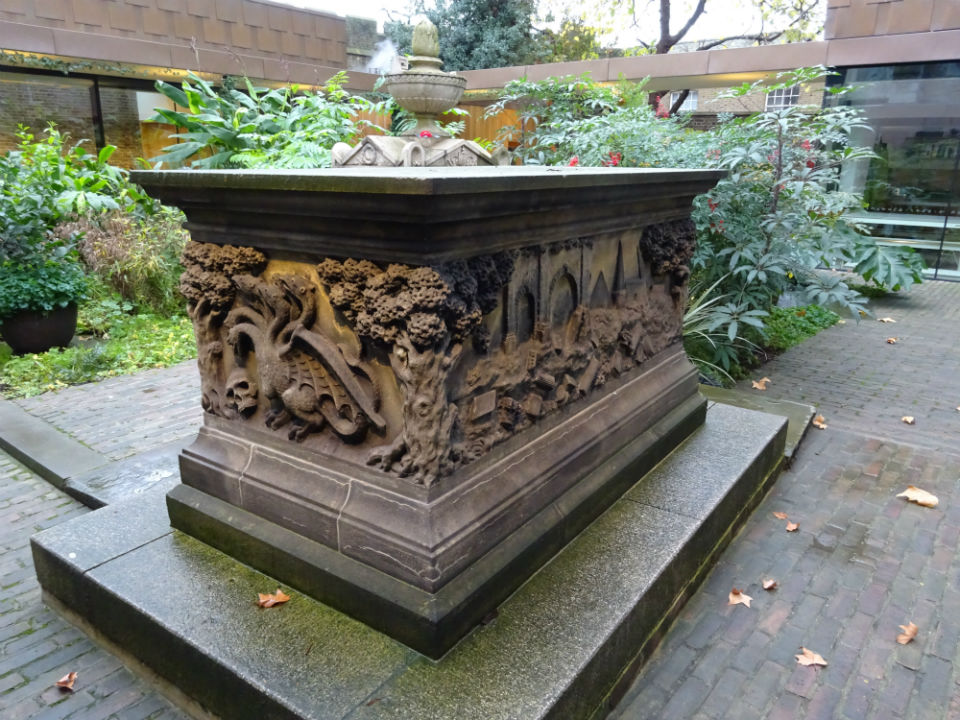
surrounded by a variety of all-year-round plants including the bright berries of Nandina domestica which reminds me that I still have not purchased this beautiful shrub yet.

Sadly on this occasion I do not have time to visit the award-winning restaurant; it is buzzing and smells divine and I can really recommend it from a previous visit.

The Garden Museum is a charity and the National Garden Scheme annually funds a trainee gardener here. Before today I had never really thought about the definition of a gardener, but the museum informs me that the first recording was ‘Edmund the Gardener’ who worked at Windsor Castle during the reign of King Edward l. In 1605 the profession was recognised by James l “for the trade, craft or misterie of gardening” and an apprenticeship took 7 years. By 1914 there were over 4,000 Head Gardeners in this country. And now?

The Garden museum is open most days but you can check for opening times on the website: https://gardenmuseum.org.uk/ do make a visit and take the children they would love it.
——-2019——-
Simply amazing…every paragraph and photo reveals another gem. Can’t wait to visit…thank you. You have bounced into 2019 with a crackerjack.
LikeLike
Quite right, the Garden Museum is the best small Museum/Gallery in London and always full of interest. Pity you did not have time for lunch, always delicious and becoming the place to go.
LikeLike
A fabulous post Julia, full of fascinating diversions.
LikeLike
You make it sound fascinating, Mrs P, and remind of how often I walk past it or through its yard!
Love
Johnny
Sent from my iPad
LikeLike
Wonderful idea, I will go over one lunchtime and check it out
R
LikeLike
I found this post very interesting. We visited the Museum a few years ago and loved it but I was interested to see from the photos that there’s one of a poster featuring a Ransomes Ajax mower: we had one of those when we were first married!
Happy memories.
Jenny
LikeLike
I don’t know about the children but I know I would certainly love it. I “found” Repton last winter and read all I could about him. I even made a sketchbook in red thinking I would make some garden sketches in it. I wonder who was the Head Gardener to whom Edmund the first Gardener was apprenticed.?? Seems like he would have been the first. So history goes. Amazing that there are records back so far. I hope to someday get over to England and do some serious tourist stops. This place is going on my list. Cheers.
LikeLike
We visited the museum a few years ago before some restoration work was don even so this is a timely reminder to revisit. Glad to hear they are doing refreshments as I remember some wonderful cake! Do get a nandina, we find them exceptionally flexible in our garden throughout the year and would not be without them.
LikeLike
How lovely to step through the Garden Gate again in 2019. Thank you – fascinating, as ever,
LikeLiked by 1 person
Serendipity – I got back to Norfolk from seeing the Repton exhibition on Wednesday and opened your email on Thursday to see this brilliant post…so that spurred me on to persuade the children to go and see it too. Loved the view from the top of the little medieval tower – that was a treat.
LikeLike
Absolutely fascinating and so near St Thomas’s too, so will plan a visit for our next reunion!
LikeLike